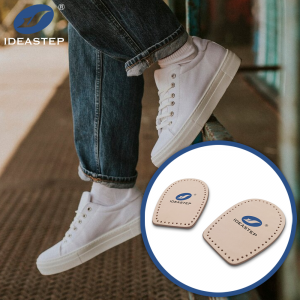
Heel pads, also known as heel cushions or inserts, are orthotic devices designed to provide support, cushioning, and relief to the heel area of the foot. They are commonly used to alleviate discomfort and prevent various foot conditions. In this article, we will explore who can benefit from heel pads and how they can provide relief for different individuals.
1. Athletes and Active Individuals
Sports enthusiasts, athletes, and individuals engaged in high-impact activities can greatly benefit from using heel pads. These pads absorb shock and reduce the pressure on the heel during running, jumping, and other intense physical movements. They help prevent heel pain, such as plantar fasciitis or Achilles tendonitis, which are common among active individuals.
2. Individuals with Plantar Fasciitis
Plantar fasciitis is a condition characterized by inflammation of the plantar fascia, a thick band of tissue connecting the heel to the toes. Heel pads provide cushioning and support to the affected area, reducing pain and discomfort associated with plantar fasciitis. They also help distribute pressure evenly, promoting proper foot alignment and aiding in the healing process.
3. People with Heel Spurs
Heel spurs are bony growths that can develop on the underside of the heel bone. They often cause sharp pain and discomfort. Heel pads can alleviate the pressure on the heel spur, providing relief and reducing pain during walking or standing. They also help cushion the heel, minimizing irritation and inflammation.
4. Individuals with Fat Pad Atrophy
Fat pad atrophy is a condition where the natural cushioning fat pad in the heel becomes thin or deteriorates. This can lead to pain and discomfort while walking or standing. Heel pads with extra padding and cushioning can compensate for the loss of natural fat pad, providing enhanced shock absorption and reducing pressure on the heel.
5. People with Flat Feet or High Arches
Individuals with flat feet or high arches often experience foot pain and instability due to improper weight distribution. Heel pads can help correct this by providing arch support and promoting proper foot alignment. They help distribute pressure evenly across the foot, reducing strain on the heel and preventing excessive pronation or supination.
Conclusion:
Heel pads are versatile orthotic devices that offer support, cushioning, and relief to individuals with various foot conditions. From athletes to those suffering from plantar fasciitis or heel spurs, heel pads can provide significant comfort and aid in the healing process. If you experience any foot discomfort or have a specific foot condition, consult with a healthcare professional or podiatrist to determine if heel pads are suitable for your needs.
Expand more related content: https://www.aideastep.com/heel-pads/.
